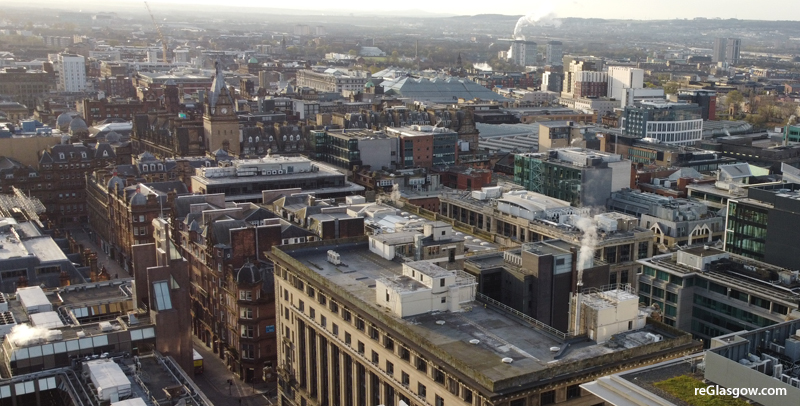
A REPORT into how repurposing of buildings in Glasgow city centre could help recovery after the pandemic was presented to a Glasgow City Council committee.
New research into the property and economy of the area will guide future strategy and action.
Councillors heard that impact of the pandemic was more severe on Glasgow city centre than on other Scottish cities because of the extended and deep covid restrictions, and its characteristics of a relatively small residential population, a reliance on a regional travel to work population, more hybrid working and the effects of the economic crisis, Brexit and the war in Ukraine.
Combined, these factors have led to both footfall and visitor spend as business costs have increased. The pre-pandemic economic activity figure was expected to be over £9.2billion but the actual figure was £8.27billion.
The latest data on the performance of the business sector shows that overall footfall is 19 per cent lower than pre-covid, but with weekend and evening footfall up by 11 per cent and 18 per cent, while weekly and lunchtime footfall –- although recovering -– is at 84 per cent of pre-covid levels.
Other impacts in the sector include rising energy and business costs; difficulties in recruiting and retaining staff; office vacancy rates up to 14 per cent; and challenges around night-time economy transport provision.
There has also been acceleration in changes in the demand for, and supply of property.
Investors and occupiers of office space now seek high-quality, flexible and sustainable space, causing a significant amount of privately-owned commercial property in the city centre to be no longer fit for purpose, and the repurposing of such space is now key to the area’s recovery.
Research into the use of city centre property suggests that there is a general need for smaller, higher quality, more agile offices. More than 400 pre-1960 office spaces are seen as obsolete and are prime sites for conversion/repurposing.
Changing upper floors for residential use only results in small-scale outcomes (average of 10 units) and does not achieve the large scale outcomes required to deal with the legacy of redundant office property and declining rents in the retail and leisure sectors.
The report concedes that some matters are outwith the control of the council, with the support and participation of the Scottish and UK governments needed.
A particular issue identified is the future use of the upper floors of Victorian and Georgian buildings in the city centre, the cost and complexity of their repurposing being added to by conservation area and listed building considerations.
Other key findings include the need to incentivise development/disincentivise long-term empty properties and sites; deliver affordable housing and support the creative economy; support for the removal of technical, practical and fiscal barriers to refurbishment and repurposing to allow this happen at scale; and considering how best to matchmake developers with end-users / building opportunities.
The council will now continue to work with the governments and other city partners to develop an action plan, which will be fed into a new City Centre Strategy, to be delivered over the next two years.
Councillor Angus Millar, convener for City Centre Recovery at Glasgow City Council, said: “The research into the challenges and opportunities facing the city centre underlines the need to consider what must be done to make it a thriving, sustainable place.
“Looking at how properties once used for retailing or commerce can be made into homes and other types of uses is just one course of action. We will work with partners to ensure that all steps open to us are taken to make the changes necessary to create a city centre that is attractive as possible a place in which to work, live, study, invest and visit.
“The council will now engage with key stakeholders to respond to this evidence base and outline our aspirations for property repurposing in the new year.”
Stuart Patrick, chief executive of Glasgow Chamber of Commerce, said: “This is an important step towards Glasgow’s recovery from the pandemic. Our city centre has gone through a rapid transformation in the last few years and this report highlights the challenges we face but also the huge opportunities available when it comes to reshaping.
“Specifically, the report identifies clear objectives in helping our recovery which are achievable and can be implemented immediately. Issues such as bringing older units which are no longer fit for purpose back into active use, helping the city meet targets for growing its residential population and working in partnership with developers to maximise the opportunity of catalytic developments, including existing proposals for Buchanan Galleries and St Enoch Centre, are all plans which we at Glasgow Chamber of Commerce fully support.
“The quality of these reports and the strategic direction upon which it wants to take the city centre forward should be welcomed and supported by all levels of Government as we look to grow and redevelop what Glasgow City Centre can offer its businesses, residents and visitors.”
The research report into city centre property was carried out by Ryden, while the research report into the city centre economy was carried out by Stantec.

